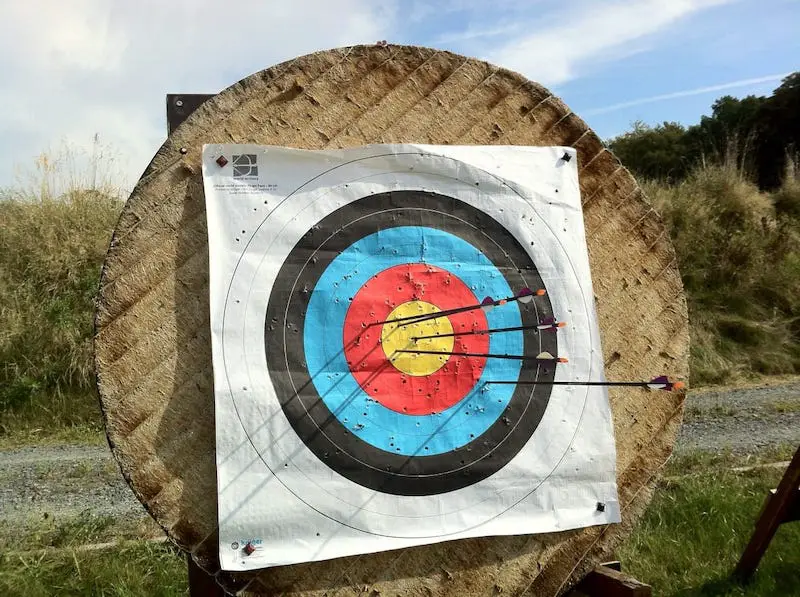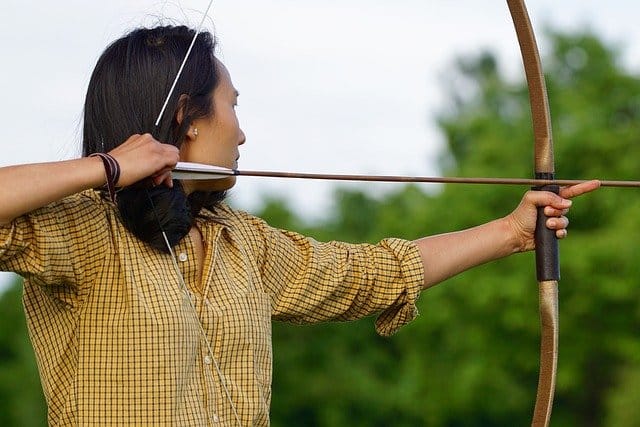There are a few factors to consider when choosing the best material for an archery backstop. Having a good archery backstop is so important. You’ll need to think about the weight of the material, the size and how easy it is to clean.

What is an archery backstop and why do you need one
An archery backstop is a structure or surface that is used to stop arrows from traveling beyond the target area. It is an essential piece of equipment for anyone who enjoys archery, as it helps to prevent injuries and damage.
Here are four of the best materials for an archery backstop
There are a few different materials that can be used for an archery backstop. Here are four of the best materials to choose from.
- PVC Pipe: PVC pipe is a great choice for a backstop because it is lightweight and easy to install. It is also very affordable and can be easily cleaned with a damp cloth
- Foam Core Board: Foam core board is another good option for a backstop because it is lightweight and easy to install. It is also durable and can be easily cleaned
- Rubber Mulch: Rubber mulch is a good choice for a backstop because it is heavy and will stop arrows from traveling beyond the target area. However, it can be difficult to clean and can become stained over time
- Hay Bale: A hay bale is a good choice for a backstop because it is heavy and will stop arrows from traveling beyond the target area. However, it can be difficult to clean, and they will deteriorate over time and become stained
- Now you know about four of the best materials for an archery backstop, also read about the best material for an archery target.
How to choose the best material for your needs
When choosing the best archery backstop material for your needs, there are a few things to consider.
- Decide what materials are available: When choosing a materials for your backstop, you’ll need to decide what materials are available in your area. PVC pipe and foam core board are both lightweight and easy to install, making them good choices for beginners. Rubber mulch i a good choice for those who want a heavy backstop, while hay bales are a good choice for those who live in a rural area
- Consider the weight of the material: The weight of the material is an important factor to consider when choosing a backstop. Heavier materials, like rubber mulch and hay bales, will stop arrows from traveling beyond the target area. However, they can be difficult to move and clean. Lighter materials, like PVC pipe and foam core board, are easy to move and clean but may not be as effective at stopping arrows
- Consider the size of the material: The size of the material is also important to consider when choosing a backstop. Larger materials will take up more space, while smaller materials can be placed closer to the target area
- Consider how easy it is to clean: The final factor to consider when choosing a material for your backstop is how easy it is to clean. Some materials, like rubber mulch and hay bales, can be difficult to clean and may become stained and deteriorate over time. Other materials, like PVC pipe and foam core board, can be easily cleaned with a damp cloth
Installation tips for your new backstop
When installing your new archery backstop, there are a few things to keep in mind.
- Make sure the surface is level: When installing your backstop, make sure the surface is level. This will ensure that the arrows travel in a straight line and hit the target
- Make sure the surface is safe: Be sure to install your backstop in an area that is safe and free of obstacles. This will help prevent injuries and accidents
- Install the backstop in a well-lit area: Install your backstop in an area that is well-lit so you can see what you are doing. This will help prevent accidents and injuries
- Use caution when installing the backstop: When installing your backstop, use caution to avoid injury
Maintenance tips to keep your backstop in good condition
Maintaining your archery backstop is important to keep it in good condition. Here are a few tips to help you keep it in good shape.
- Clean the surface regularly: Clean the surface of your backstop regularly with a damp cloth to remove any dirt or debris. This will help keep it looking nice and prevent any staining
- Keep the area around the backstop clear: Keep the area around the backstop clear of any obstacles so people can safely walk past it
- Replace any damaged materials: Replace any materials that have been damaged or are no longer in good condition. This will help keep your backstop looking nice and safe
FAQs about Archery Backstops
What materials can be used for an archery backstop?
There are a few materials that can be used for an archery backstop, including PVC pipe, foam core board, rubber mulch, and hay bales.
Can you use tarp as an archery backstop?
What is the weight of the material?
The weight of the material is an important factor to consider when choosing a backstop. Heavier materials, like rubber mulch and hay bales, will stop arrows from traveling beyond the target area. However, they can be difficult to move and clean. Lighter materials, like PVC pipe and foam core board, are easy to move and clean but may not be as effective at stopping arrows.
What should be the size of the backstop material?
The size of the material is also important to consider when choosing a backstop. Larger materials will take up more space, while smaller materials can be placed closer to the target area. The size of the backstop should be at least 3 feet by 5 feet.
How easy is it to clean?
The final factor to consider when choosing a material for your backstop is how easy it is to clean. Some materials, like rubber mulch and hay bales, can be difficult to clean and may become stained over time. Other materials, like PVC pipe and foam core board, can be easily cleaned with a damp cloth.


